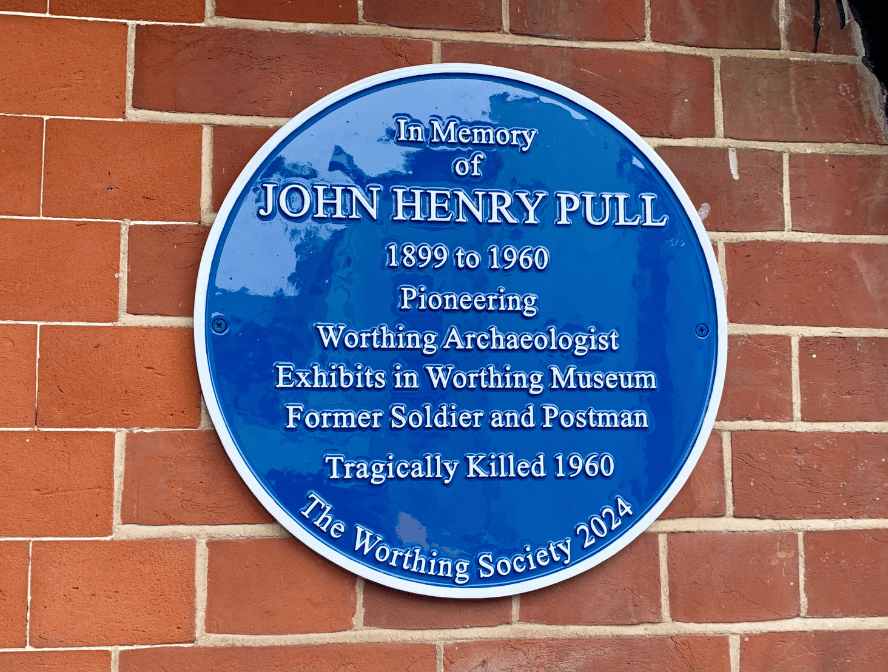In an exciting development for Worthing Museum, a blue plaque has been installed to honour the memory of John Henry Pull, a local hero of archaeology.
Who was John Henry Pull?
Born in Arundel in 1899, John Henry Pull served in the First World War where he learned techniques in surveying. After the war he had many jobs, but archaeology remained his passion. Sussex has a rich archaeological history and Pull used the skills he learned in the army to start excavating local sites. James Sainsbury, Worthing Museum’s archaeology curator said:
Pull’s work on the Neolithic flint mines around Worthing was pioneering - a working-class Worthing lad who taught himself archaeological practice, and spent nearly 40 years excavating some of the most important sites in British Prehistory, all in his spare time.
An ‘Amateur’ Archaeologist
Pull’s working-class background meant that he was something of an outcast amongst established archaeology societies of his time. Experts in the field were almost exclusively upper-class. His discoveries were often dismissed, or his work was plagiarised by more powerful archaeologists. Eventually this treatment drove him to leave the Worthing Archaeological Society. However, he continued to excavate the flint mines and other sites. Pull would invite members of the public, including women and children to visit the sites and assist in the work, which was unheard of at the time.
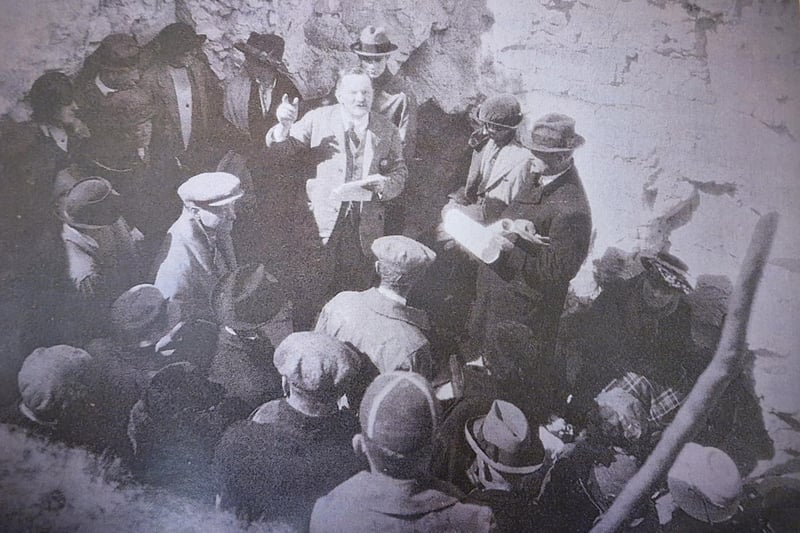
His passion for archaeology was something he wanted to share widely, and not gatekeep inside the confines of academia. He rejoined Worthing Archaeological Society in 1947 and with their help conducted his last work at Cissbury. Pull was tragically murdered during a bank robbery in Durrington in 1960. He never lived to see the general public’s increased interest in archaeology throughout the latter part of the 20th century. He is now rightfully honoured for his contributions to local history and the archaeological record with the blue plaque.
What is a blue plaque?
Blue plaques are an established form of honouring and recognising people of cultural and historical importance around the UK. The plaques mark places of significance for the person, usually residences or places of work. The official scheme is run by English Heritage and is restricted to sites in Greater London. However, it is a scheme that has been adopted by many local history organisations around the country, and beyond. Pull’s blue plaque has been spearheaded by the Worthing Society, alongside Pull’s granddaughter Amanda and other members of his family. It was unveiled on Thursday 16th May by Worthing’s Mayor Councillor Jon Roser.
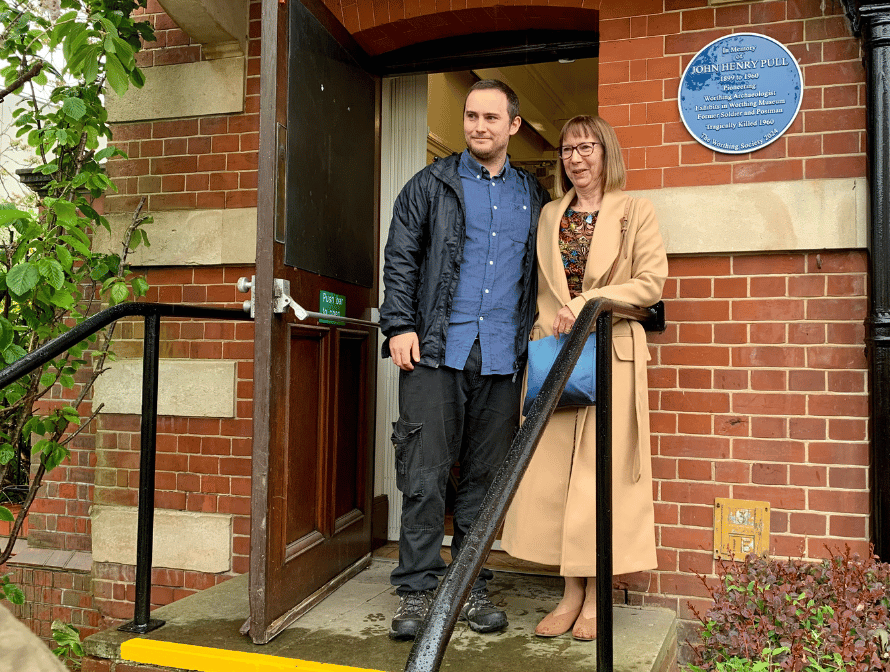
Pull’s Work & Achievements
It is now recognised that Pull was conducting cutting-edge and pioneering archaeological work on the sites he worked. He was also making archaeology accessible to the wider public. His excavations at Blackpatch flint mine took over 10 years. With the help of passionate friends and volunteers they excavated nine of the 100 known mine shafts at the site. Each shaft contained over 50 tonnes of chalk rubble and flint.
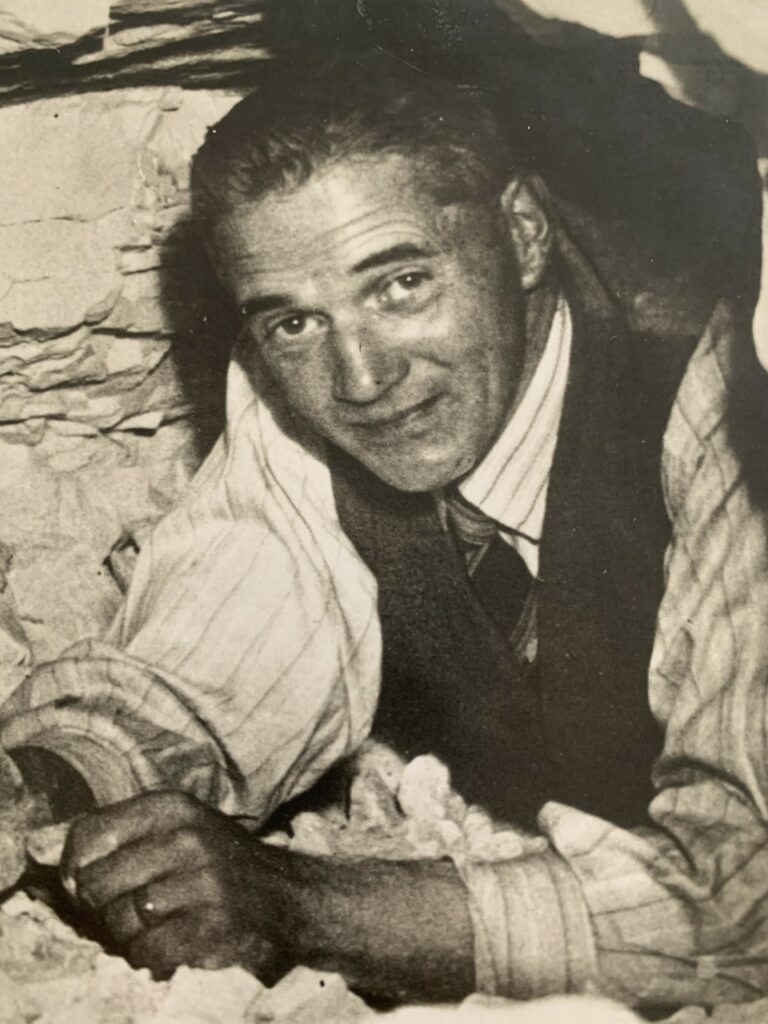
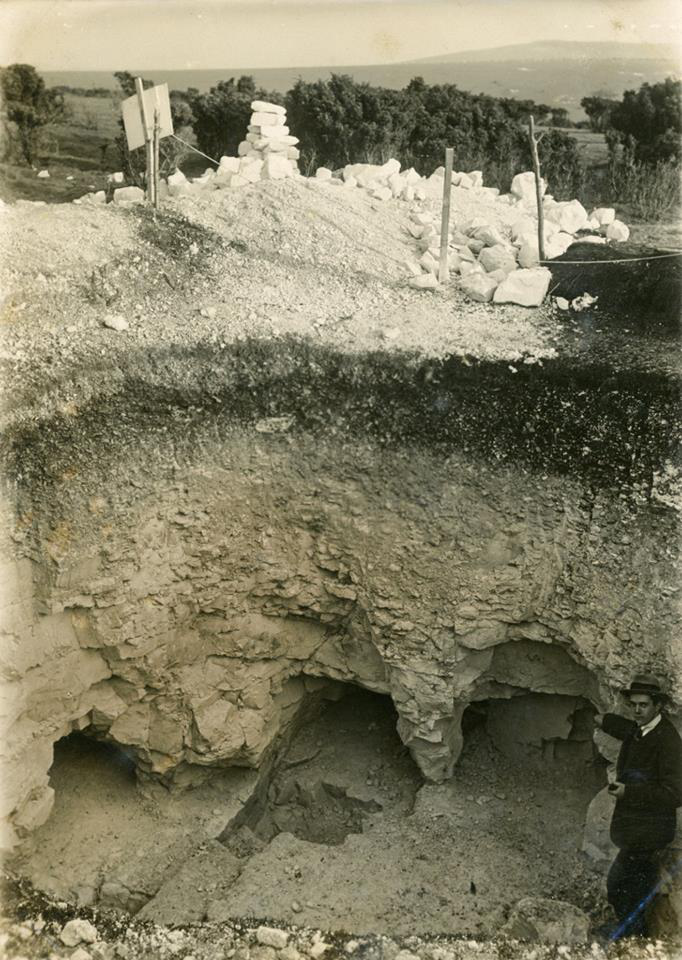
John Pull and the site at Blackpatch
Between 1932 and 1948 Pull excavated more Neolithic flint mines at Church Hill in Findon. Here he also trained many future archaeologists, and photos of the dig site show women and children visiting. Pull also worked on Worthing’s famous Cissbury Ring, which is the largest Iron-age hill fort in Sussex. It is the second largest in England and one of the largest in Europe overall. Here, in May 1953 Pull uncovered the remains of a young woman. Dubbed the ‘Cissbury Lady’, her remains were recently carbon dated to around 3700 BCE. Though John suggested she had died in a mining accident it is more likely that she was buried there after an illness at around the age of 20. Pull and his team also uncovered chalk carvings, mostly of animals, which includes the earliest known artistic expression of a domesticated animal in British archaeology.
Pull’s Legacy and Worthing Museum
The significant artefacts recovered by Pull, and his extensive paper archive, were donated to Worthing Museum in 1961. His collection of flint tools, uncovered at the various sites he worked, are of national importance. Museum curator James Sainsbury, along with many members of Worthing Archaeological Society, have been working to categorise these artefacts and ensure they are preserved. There is a permanent display devoted to Pull’s work at the museum. In 2022 the museum held a major exhibition about his life and achievements to mark 100 years since he discovered the flint mine at Blackpatch.
James Sainsbury said:
We are delighted to now host his blue plaque on our building, with particular thanks due to Sue Belton of the Worthing Society and John's granddaughter Amanda, who worked so tirelessly to make this dedication possible.
Attending the unveiling ceremony at the museum, Pulls granddaughter Amanda said:
As a family, we are very proud of John Pull but we also recognise that what he achieved was done through teamwork and encouragement of friends, volunteers and his very understanding and lovely wife Alice. The siting of the John Pull blue plaque is the perfect location as we believe it will encourage more people to visit. The museum should be applauded that entry is free and therefore accessible to all.
Be sure to look out for Pull’s new plaque on the southern side of Worthing Museum, and why not pop in to see the permanent display of Pull’s work. Worthing Museum is open Wednesday-Sunday and is free to enter. Find out more about your visit to the museum below.

